Things have been moving along pretty well with my giant switch mode power supply project since Project Log 1. I sold a bunch of surplus items I’ve had sitting around in order to buy a bunch of the components I needed for the build, but there’s still a lot more I need. This selling is how one keeps equipment from taking over their house and is the nature of things at my place. I turned small switch mode power supplies, fans and other things I didn’t really need into fresh new components. As you can see in the photos below, I put in a sizable order with the Digikey Corporation to order a majority, but not all of the components I need for this build.
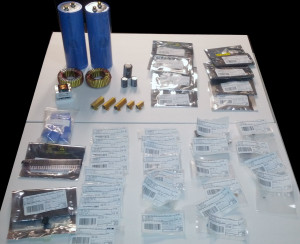
The two big capacitors were ordered from eBay, hobbyists can’t afford to buy these things new from vendors so some NOS (new old stock) and some testing will have to do. The big power inductors just below the capacitors were hand wound by myself onto iron powder cores purchased from Amidon. The bag of blue capacitors under the coil are pulse rated 1uF 400V MKP capacitors which I also purchased off of eBay.
I had to make some changes to the circuit for the switch mode supply. I was originally going to replace the current sense resistor with a hall effect sensor. I have the hall effect sensor, but the more I started reading about it, the more I became frustrated. The documentation is not what I would consider great, so it’s going to take some experimentation with the hall effect sensor to find out how to get it working the way I want. I’ve resorted back to the resistor, but I’ve adapted the circuit to allow for it’s easy integration of the hall effect sensor in the future. Right now I want to get this up and running with minimal hassle.
As mentioned, I’ve reverted back to using the 0.1 Ohm / 300 Watt resistor on the power supply output to measure 0-50 amps worth of current as 0-5Volts which will be fed into the PWM chopper driver. I would prefer to have something in the range of 0-35 amps output as 0-5 Volts, but I would need a 175 watt resistor at 0.142 ohms which I don’t have.
After making changes to the circuit schematics as needed and inserting interconnects to a bunch of the modules I have begun to create the printed circuit board layouts for the modules. I started with the first module, which is a simple power filter design for the output side. . Once I had it pieced together the power filter seems somewhat unsubstantial, but it is what was specified. With a modular setup, everything can be changed as needed though. I think it could stand to be more robust but we’ll find out when testing
One thing of note is that I plan on having this board printed by OSHPark, OSHPark uses 1oz copper on their boards, which is fine. But in order for this board to carry at least 35 Amps continuous, the PCB trace needs to be 40mm wide. This board only has two wiring nets for the ratsnest. Net 00000 and Net 00001. I made the bottom of the board Net 00000 and the top Net 00001 and the flood filled each side. This resulted in a very heavy interconnect between all of the connectors and the capacitors. It should be good. There is one power resistor which connects to this board via one of the terminal screw blocks.
I drew up the board in Kicad’s PCBNew and had to create a couple of custom component PCB footprints for the blue colored capacitors and then I printed the PCB out, to scale, on paper in order to test fit the components. As you may know, everything always looks good on paper so we’ll just have to see if they fit on the real thing. I still don’t have the power connectors to test fit yet, but soon…
Here’s what the board should look like once OSHPark gets done with it. Right now it’s just a rendering from OSHPark, when I get all the printed circuit boards designed I’ll send them all out to be etched, drilled, silk screened, etc. This gives me time to catch problems or make design changes, rather than sending out each part to be done as soon as it’s completed.
I started working on the layout for the MOSFET chopper boards last night. Each board will handle about 15 amps max, so I’m tempted to build 3 of them for 45 amps absolute maximum power on the supply. That sounds pretty greedy though!
Again I needed to make a some new components for Kicad pcbnew in order to lay it out, but it wasn’t too bad. I only had to make a fuse holder footprint for 1 1/4″ fuses and a footprint for some SMD 2010 wide resistors I’m using. I still need to learn how to use Wings3D to design the 3D rendered parts for the components so I can get some fancy looking board renderings to preview! Now it’s just about finding the shortest paths possible to wire the mosfets, drivers, capacitors and diodes all together in a very low inductance/resistance way.
I also need to put some thoughts into the case of this thing. I don’t want it to turn out ugly like my first linear pass bank power supply did over 15 years ago! 15!? holy.. anyway, here’s what that looked like so we know what I’m NOT aiming for.
With the CNC machine it should be much easier to build a good case. I’m planning on using some OpenBeam aluminum extrusion to build the frame and sliding aluminum panels into the slots on the aluminum extrusion to make the tops and sides of the supply. Then I’ll machine some nice thicker plate for the front and back panels.
I’ve also ordered some little LCD displays for the case. The first one is for the input side and will show 100-300 VAC at up to 100 Amps using a current transformer. The second one will show 0-600 VDC at up to 100 Amps using a current shunt. These should look nice on the panel and will allow me to keep an eye on things a little bit. I really didn’t want to use analog meters on this design. I don’t suspect they’ll be hyper accurate, but I don’t need them to be. I’ll leave you with the pictures of them and then you can continue to Part 3

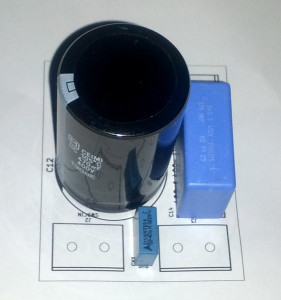
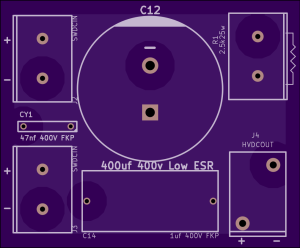
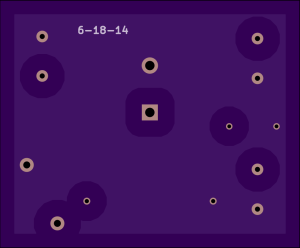
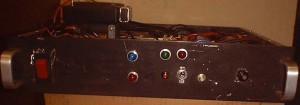
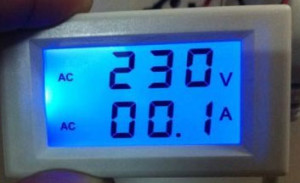
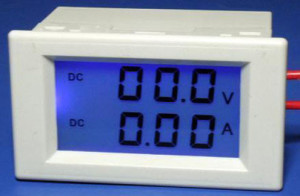
Leave a reply to Large Switched DC Power Supply For Argon Laser Project Log 2